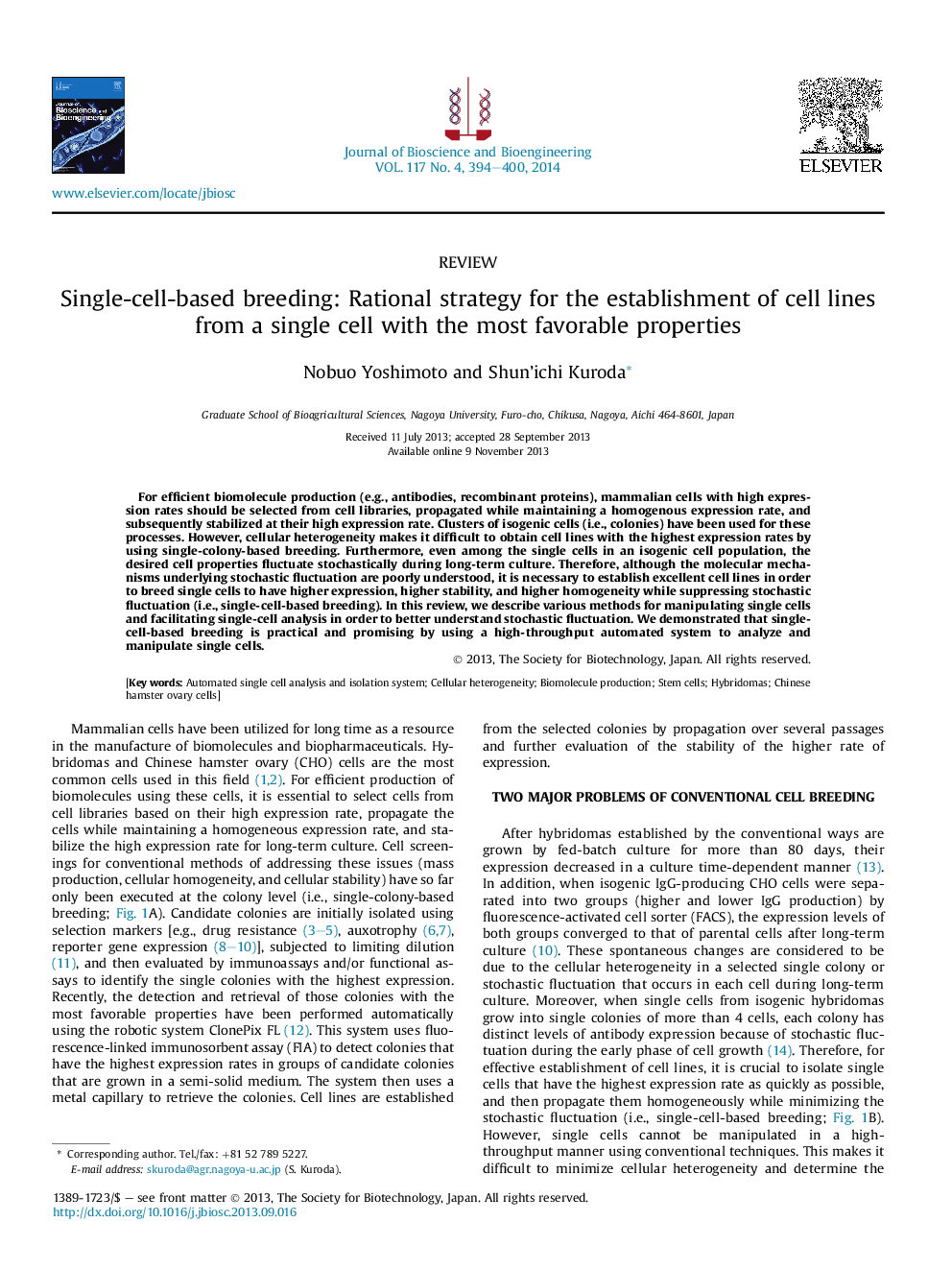| Article ID | Journal | Published Year | Pages | File Type |
|---|---|---|---|---|
| 20736 | Journal of Bioscience and Bioengineering | 2014 | 7 Pages |
For efficient biomolecule production (e.g., antibodies, recombinant proteins), mammalian cells with high expression rates should be selected from cell libraries, propagated while maintaining a homogenous expression rate, and subsequently stabilized at their high expression rate. Clusters of isogenic cells (i.e., colonies) have been used for these processes. However, cellular heterogeneity makes it difficult to obtain cell lines with the highest expression rates by using single-colony-based breeding. Furthermore, even among the single cells in an isogenic cell population, the desired cell properties fluctuate stochastically during long-term culture. Therefore, although the molecular mechanisms underlying stochastic fluctuation are poorly understood, it is necessary to establish excellent cell lines in order to breed single cells to have higher expression, higher stability, and higher homogeneity while suppressing stochastic fluctuation (i.e., single-cell-based breeding). In this review, we describe various methods for manipulating single cells and facilitating single-cell analysis in order to better understand stochastic fluctuation. We demonstrated that single-cell-based breeding is practical and promising by using a high-throughput automated system to analyze and manipulate single cells.
